I’ve never understood web sites that subject visitors to a giant pop-up the moment they arrive demanding their email address. The strong-arm tactic is often used before visitors have even had a chance to read whatever article they came to read.
And it’s only the starting gambit. Marketers have a whole grab-bag of passive-aggressive tricks to choose from: pop-ups, slide-ins, scroll-downs, welcome mats, sticky bars, on-exit intents, home gates, takeovers, bait-and-switch freebies, etc. They all boast high conversion rates. They’re all promoted ad nauseam in content marketing listicles. And yet many of these tactics are really, really annoying to the very audience that marketers are trying to engage.
Money Lab put together a funny parody landing page, “I Want Your Email Address”, that mashes all of these tactics together.
Whenever I’ve asked practitioners about some of the more annoying tactics, they have data-driven justification. Yet most of the data cited tends to be short-term focused. Much of the emphasis is on list growth as the only criteria. I rarely hear much about the low open rates and churn that can result from having a list made up people who aren’t that psyched to be there. I rarely hear an assessment that what is appropriate for one brand may not be appropriate for all.
I liked reading an article from Paul Jarvis called “This is the exact opposite of every ‘grow your list’ article”. He encourages people not to blindly use every tactic on the shelf, but to start by thinking of the purpose behind your list and make every decision guided by that filter. He advises:
“So, how do you grow your list? One person at a time. One right person at a time using your own style. And then you start communicating with them, like a human being, and hopefully creating something they want to share with the human beings that they know.”
Over the last 15 years, I’ve followed that approach with my Marketoonist newsletter list. Sure, my list could be bigger if I used more aggressive sign-up tactics. But many of those tactics wouldn’t feel right to me. And I know that my newsletter isn’t for everyone. I’m happy prioritizing the 40% open rate my weekly newsletter sees on average. That’s a sign of an engaged audience. Not an arbitrary list size.
In pursuing data-driven marketing, there’s a risk of becoming data-blinded. Here are a few related cartoons I’ve drawn on this topic. I’d love to hear your thoughts.
“Big Data Analytics”, April 2014
“Data-driven Marketing”, November 2014
“Marketing Funnel”, January 2015
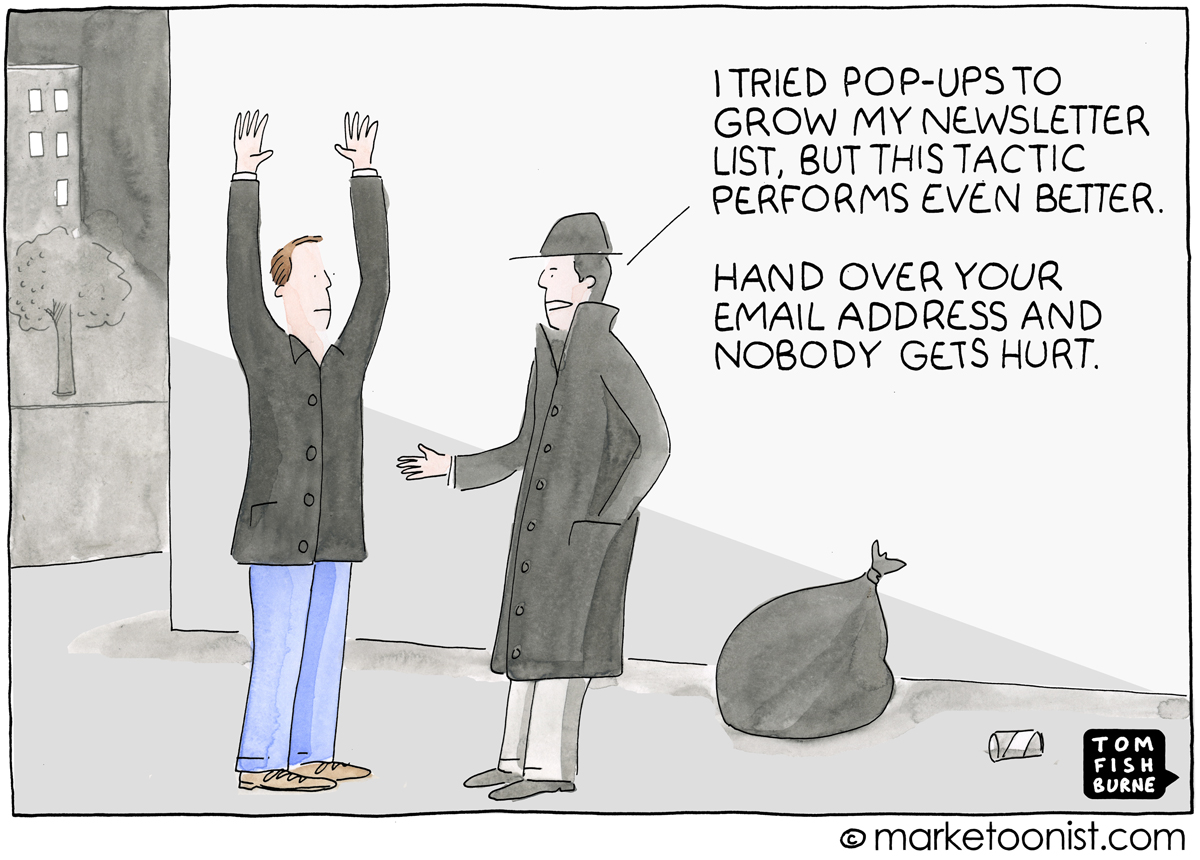
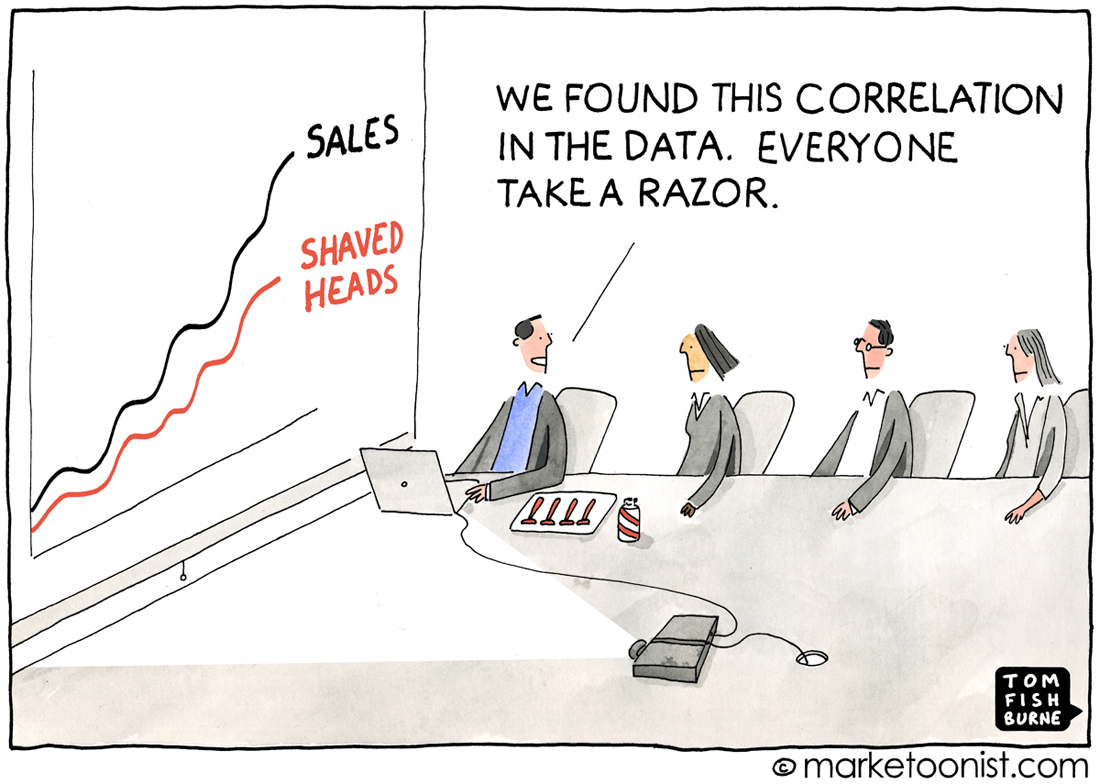
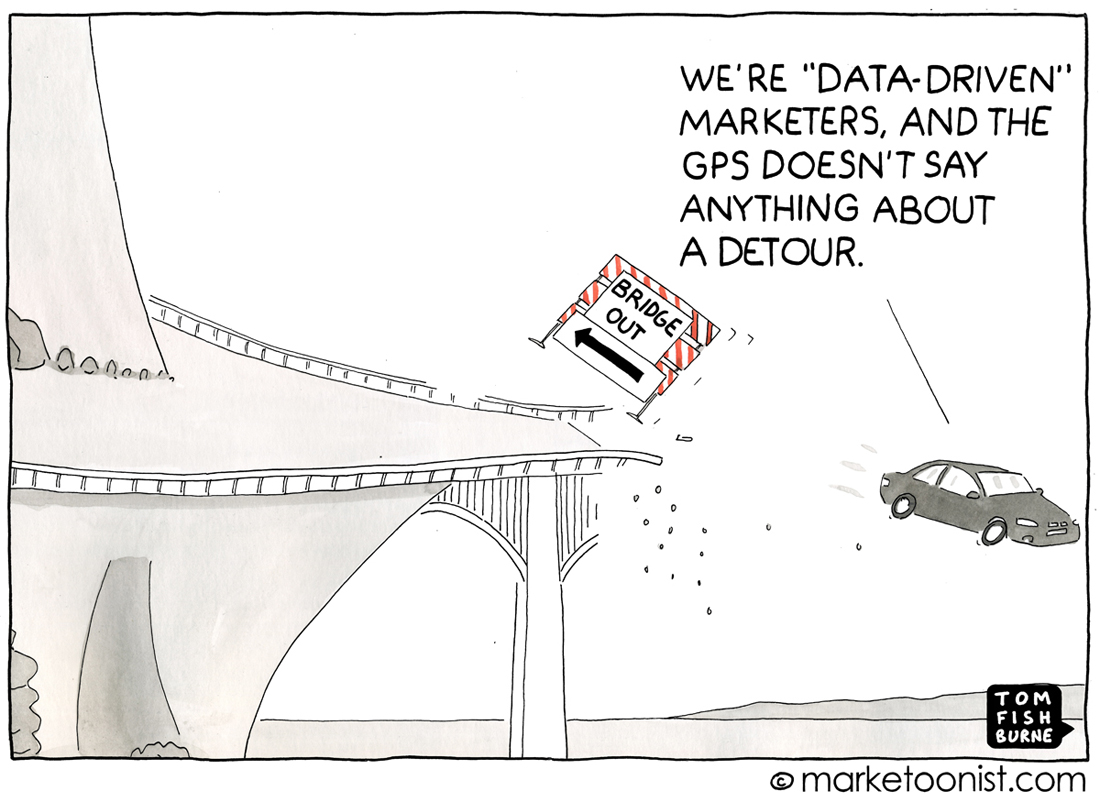
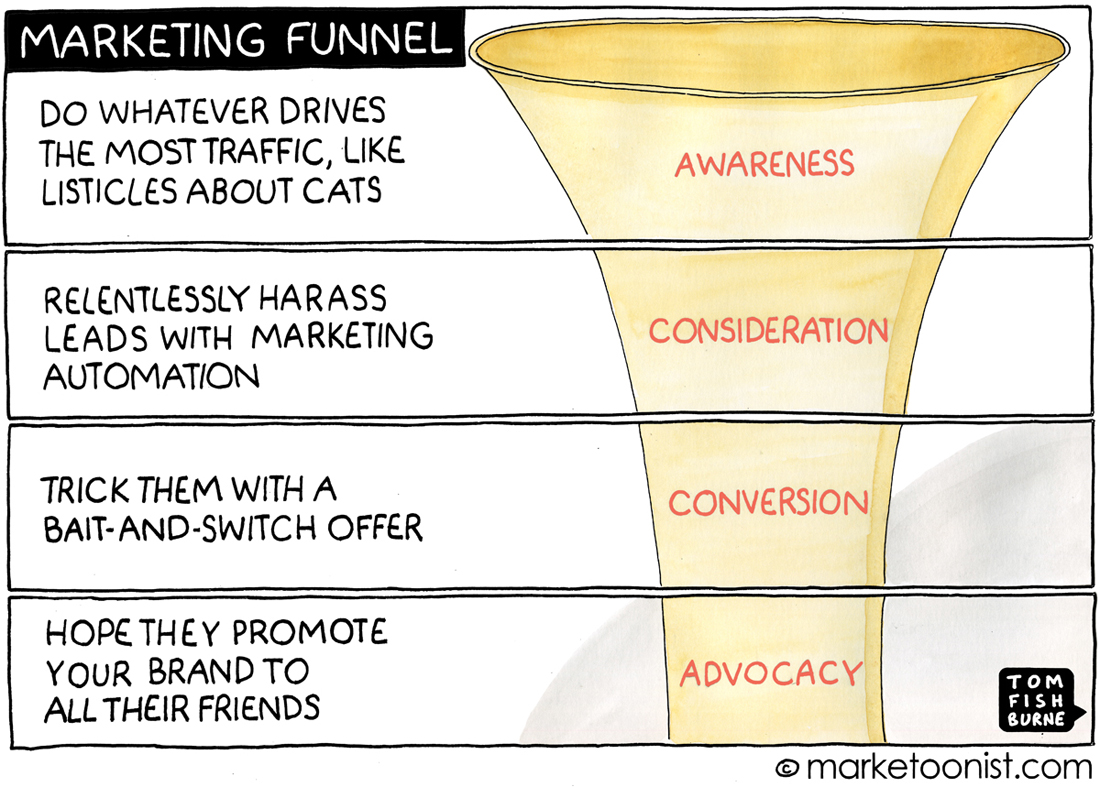
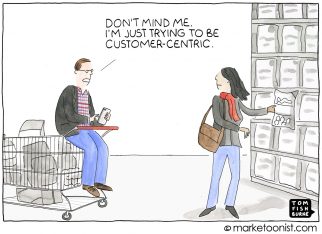
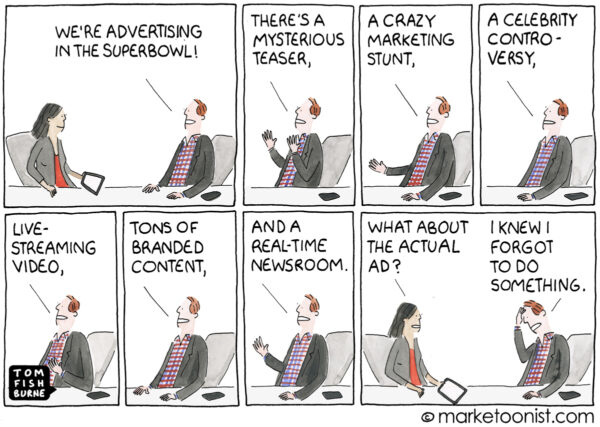
Paul (from Idea Sandbox) says
Wait… where’s *YOUR* UNSUBSCRIBE button?!
All this falls under the “just because you can doesn’t mean you should” marketing category.
And, we’re not dummies… we know how to immediately unsubscribe once we get the thing (maybe) worth looking at but not worth a lifetime of sales emails…
I get that 1% will respond (making that number up)… and that the logic follows… 1% of 1000 is better than 1% of 100. But that only assumes any % is interested in what you’re selling. 1000 x 0 = 0.
You gotta go to the page from MoneyLab and scroll to the bottom… then move your cursor away… and make sure you wait 90 seconds before leaving the site… I love that they even put “this popup should be tripling my conversion rates” in the popup…
Martin Shingler says
Very good point about pressure to give emails. I, and many others, have at at least two email addresses because of this. One we give out when we really want information/communication, the other is basically for junk email probably viewed every six months or so, just to clear it down. (And I use a separate email for personal communication).
So yes the web marketing gets another “score” but it does not mean that I will even notice what email arrives – unless I wanted it in the first place
BC says
I’ve learned from my guru client service person at iContact that a big list isn’t as valuable as good open rates. Some email handlers are applying an algorithm that decides what emails actually make it to our inboxes. In the case of eblasts, if the open rates among the broad audience are low, emails from that source may die in the spam folder.
I was surprised to hear this, couldn’t believe that email handlers are censoring, but checked my gmail account and sure enough, I could see the evidence. Not sure I like or agree with the concept, but a reality it is!
And my analysis of my client’s eblasts suggests a small number of recipients are repeat-openers, so the list may be 10,000 strong but really only reaching 2,000 (for example).
That said, I receive a lot of enewsletters which I don’t open but which I like having around “for reference” — topics of interest but not necessarily *immediate* interest (thus not liking the “helpful censoring” idea). But a little tricky connecting the dots relative to “delayed openers”…
Anyway, agree that I don’t like the idea of having to click past the enews signup to get to content, and even worse, if there’s an incentive — e.g. discount on first order which of course could be followed-up with an opt-out with the next email.
Like all other marketing options, needs to be considered and applied in context of the overall marketing effort!
Karen Smock says
I agree. Nothing irritates me more than being asked to subscribe when I haven’t had 2 minutes to read what I originally clicked on. I assume that if they’re that aggressive and irritating before they have my email, it will only get worse if I make the mistake of handing it over. I suspect that these tactics get a lot of subscriptions from unused email accounts that people enter when they don’t want to subscribe with the address they actually use. Sadly, then the newsletter or e-blast gets blamed for a low open rate, when list quality is the problem. Strive for quality over quantity.
maria says
Since 1998, I’ve tried it all on my own site(s). Give great content, then ask for my email.
I find that many online clothing shopping companies won’t let me see the item I wanted to look at w/o my email. It’s got to be something I really want before you get my email; most often I leave annoyed.
What I’m trying out now, is a plug in I found where, on a widget, I am capturing email addresses from people who want to subscribe, not to my newsletter, but to my blog.
Hansjörg Leichsenring says
I laughed and loved reading “I Want Your Email Address”. As usual there is not one for all solution. If you provide (relevant) daily News Content, a daily Newsletter makes sense. Of course not everyone does open and click, but the more subscribers the more Readers. An in the fast changing world of the Internet, a stable Client (Reader) Basis is worth a lot.
The interesting Thing is, that marketers always asy, that they hated popups, but in reality, you will not only find a lot, they do work pretty well.
Cheers from Germany
Hansjörg Leichsenring
Sarah Thompson says
I really enjoyed your article. I recently wanted to attend a useful “free” webinar, but the process was so aggressive, wanted much more information action than my email address, and the email follow ups when I didn’t watch the webinar were so off putting that I decided that I would never use that company for anything. I think that you need to be really genuine, provide great content and be respectful with your readers.